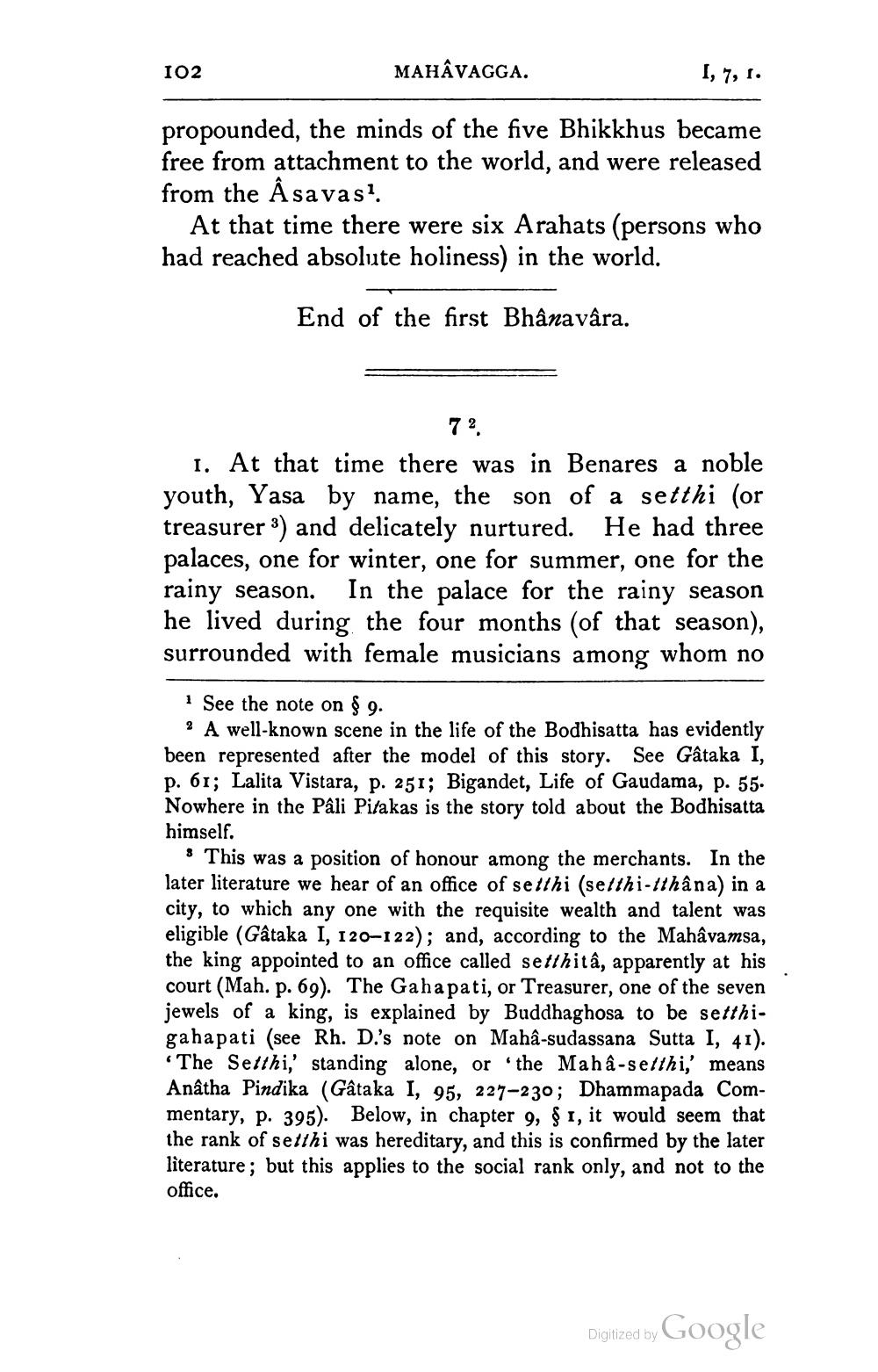________________
102
MAHÂVAGGA.
1, 7, 1.
propounded, the minds of the five Bhikkhus became free from attachment to the world, and were released from the Asavas?.
At that time there were six Arahats (persons who had reached absolute holiness) in the world.
End of the first Bhânavara.
72. 1. At that time there was in Benares a noble youth, Yasa by name, the son of a setthi (or treasurer 3) and delicately nurtured. He had three palaces, one for winter, one for summer, one for the rainy season. In the palace for the rainy season he lived during the four months (of that season), surrounded with female musicians among whom no
i See the note on § 9.
A well-known scene in the life of the Bodhisatta has evidently been represented after the model of this story. See Gâtaka I, p. 61; Lalita Vistara, p. 251; Bigandet, Life of Gaudama, p. 55. Nowhere in the Pali Pitakas is the story told about the Bodhisatta himself.
* This was a position of honour among the merchants. In the later literature we hear of an office of setthi (setthi-tthâna) in a city, to which any one with the requisite wealth and talent was eligible (Gâtaka I, 120-122); and, according to the Mahavamsa, the king appointed to an office called setthitâ, apparently at his court (Mah. p. 69). The Gaha pati, or Treasurer, one of the seven jewels of a king, is explained by Buddhaghosa to be setthigahapati (see Rh. D.'s note on Mahâ-sudassana Sutta I, 41). "The Setthi,' standing alone, or the Mahâ-setthi,' means Anatha Pindika (Gâtaka I, 95, 227-230; Dhammapada Commentary, p. 395). Below, in chapter 9, § 1, it would seem that the rank of setthi was hereditary, and this is confirmed by the later literature; but this applies to the social rank only, and not to the office.
Digitized by Google




